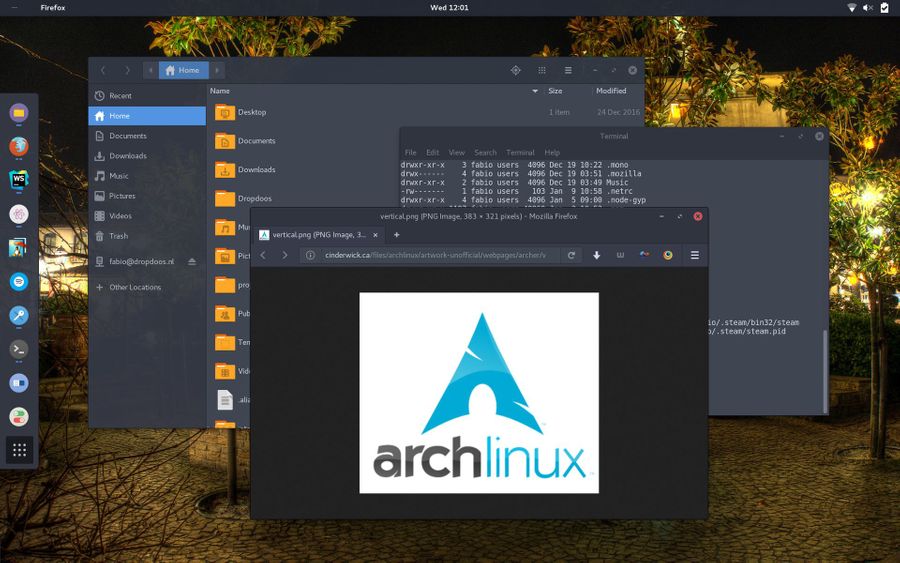

Ubuntu comes with a very easy to use graphical installer, and many graphical point-and-click management tools built-in to make system management, updates, setting changes and the like all very easy to navigate for less-experienced users. Ubuntu, unlike Arch, has a regular release cycle with new releases every six months, and long-term support (LTS) releases every two years. Ubuntu is based on Debian, which is known for its rock-solid stability and great Advanced Packaging Tool (APT) package manager that has a number of well-known graphical front-ends and forks. It has been known as one of the most commonly used, most user-friendly distributions, by many, for over a decade. Ubuntu is the first foray into the Linux world for many people across the world. Arch could be considered, conversationally speaking, a very plain and generic system, in the best of ways, opting for user customization to extreme levels rather than adding a multitude of premade tools and layers of abstraction. Arch Linux also aims to have very minimal distribution-specific package updates, so you won’t find as many instances of things not playing nicely together or with your system when you try to customize things, because you don’t have to worry about distribution maintainers changing things or customizing packages or applications to tailor to the system.
#Arch linux sucks update
All one needs to do is a regular package update and they will have the latest version of Arch Linux and all its packages.
#Arch linux sucks install
Arch does not come with any standard Desktop Environment as its default, having each user choose what to install for themselves.Īrch Linux is a rolling release model, which means there are no major releases or giant system-wide updates and version numbers that most people would pay attention to. Arch is still primarily based on binary packages unlike other CLI heavy systems such as Gentoo which are more source based, however a system known as the Arch Build System does exist and is designed for source compilation for those who prefer to go that route. Arch Linux does not, by default, come with an overload of bloatware either, as would go against its minimalist design, so users expected to build their system tailored to their own needs, and only have applications that they actually want installed. Unlike most common distributions, Arch Linux by default does not have a graphical install process for example, rather being installed by command line only. However, this does not always translate to having your hand held, or having tools do everything for you, when specifically referring to Linux systems and how things are done or managed. Arch follows the principle of KISS, or ‘Keep It Simple, Stupid' which is a principle used to describe the practice of keeping things as simple and less complex, whenever possible. Arch LinuxĪrch Linux was first released on March 11, 2002, and was created to be a minimalist distribution. I love the APT system for package management, and I find Ubuntu stable and secure, with a huge support community for any issues I may face. I use Ubuntu as a server distribution right now, on three different servers. Actually, I have multiple Ubuntu systems running as I write this, and zero Arch based systems.

It’s no secret to anyone who has followed previous articles I’ve written on Ghacks, that I love Arch Linux and its derivatives… But, that’s not to say that Ubuntu and Ubuntu-based systems are something I don’t use.


 0 kommentar(er)
0 kommentar(er)
